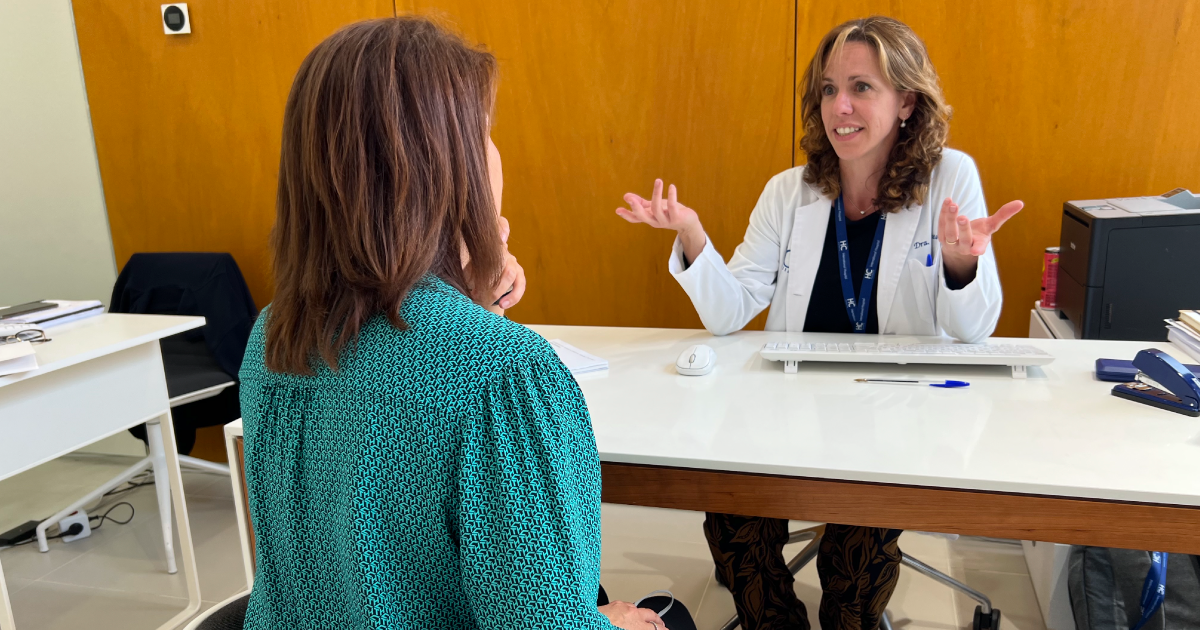27 June, 2023
Main reasons of infertility that affect men and women

Nowadays infertility is a truly worrying problem. The World Health Organization (WHO) has itself declared it a disease as fertility problems are now estimated to affect 1 in 6 couples of reproductive age.
As we explained in our blog regarding the current importance of assisted reproduction, according to the Spanish Fertility Society, in Spain alone 10% of children born are as a result of assisted reproduction techniques.
The truth is that in addition to the obvious problem for the women and couples affected, the problems arising from infertility may now be considered a true demographic problem. With many couples not considering a second pregnancy, due to a delay in the age at which they finally achieve their first pregnancy, there has been a significant effect on the birth rate.

What are the main causes of infertility at this current time?
Female infertility: why is pregnancy elusive?

We often insist on the importance of age when a woman wishes to become pregnant and this is, without a doubt, the main problem facing assisted reproduction today.
We must not forget, as the years go by, both the quality and the quantity of eggs produced by a woman in each menstrual cycle begin to decrease, especially from around the age of 35, so when reaching this age, it can be very difficult to become pregnant. However, often a woman’s biological clock does not go hand in hand with the best time personally or professionally, postponing pregnancy, something we are fully aware of at HC Fertility,
Although age is probably the main factor affecting women today, in our outpatient department we also treat other causes or conditions which make pregnancy difficult.
The most common causes diagnosed and for which we provide personalised treatment are:
- Endometriosis: endometriosis is a disease which affects approximately 1 in 10 women, hindering or preventing pregnancy depending on its severity, with symptoms affecting day-to-day life for the women who suffer from it. Fortunately, although it is a relatively unknown disease, in recent years much progress has been made in its diagnosis and treatment, as well as in the reproductive options for women suffering from it.
- Polycystic Ovary Syndrome (PCOS): this is a complex metabolic disorder which affects fertility due to one fundamental feature, the absence of ovulation (also known as anovulation), women with this disease do not therefore fall pregnant easily.
- Fallopian tube damage: a relatively common problem is damage to the fallopian tubes, usually an obstruction, which prevents the egg from moving and meeting the sperm for fertilisation. The reasons for this are diverse, the most common being Salpingitis (inflammation of the tube) or Hydrosalpinx, that is, the accumulation of fluid in one of the tubes, usually as result of infection.
- Absence of menstruation: factors which can cause our body not to ovulate at any given time, apart from diseases such as PCOS, are also very much related to our habits and lifestyle. Thus, factors such as stress, obesity or rapid and sudden weight loss are very common causes for lack of menstruation. The absence of regular cycles leads almost unfailingly to a lack of ovulation, therefore rendering pregnancy impossible.
Male infertility: main causes

A few weeks ago, we shared an article in our blog section in which we reflected on the increase in cases in which infertility within a couple is associated with a male factor.
It is worth remembering that the number of cases we deal with in our clinic in which the diagnosis of reproductive health status indicates that the problems are in the man or the woman are currently very similar. In around 40% of cases the diagnosis is related to the man and in another 40% it is related to the woman.
In the last article we explained how lifestyle and unhealthy habits, for example, obesity, smoking, alcoholism or sedentary lifestyle, are issues associated with poor semen quality.
Aside from this, there are a number of biological factors affecting both the quantity and quality of sperm, including:
- Abnormalities in testicular function which directly affect the quality of semen, for example, azoospermia or oligospermia of testicular origin.
- Obstruction or infection in the ducts, having a resulting effect.
- Abnormalities in the reproductive system.
- Hormonal abnormalities which influence reproductive function.
- Genetic abnormalities.

Back to blog
In other news

7 July, 2020
The low ovarian response
A few days ago, we were talking about the ¨Low Reserve¨ (few eggs); Today we will talk about ¨Low...
[Continue reading ]19 June, 2020
How does the number of eggs decrease over the years?
The amount of a woman’s eggs decreases from the moment of birth, over the years, until menopau...
[Continue reading ]


